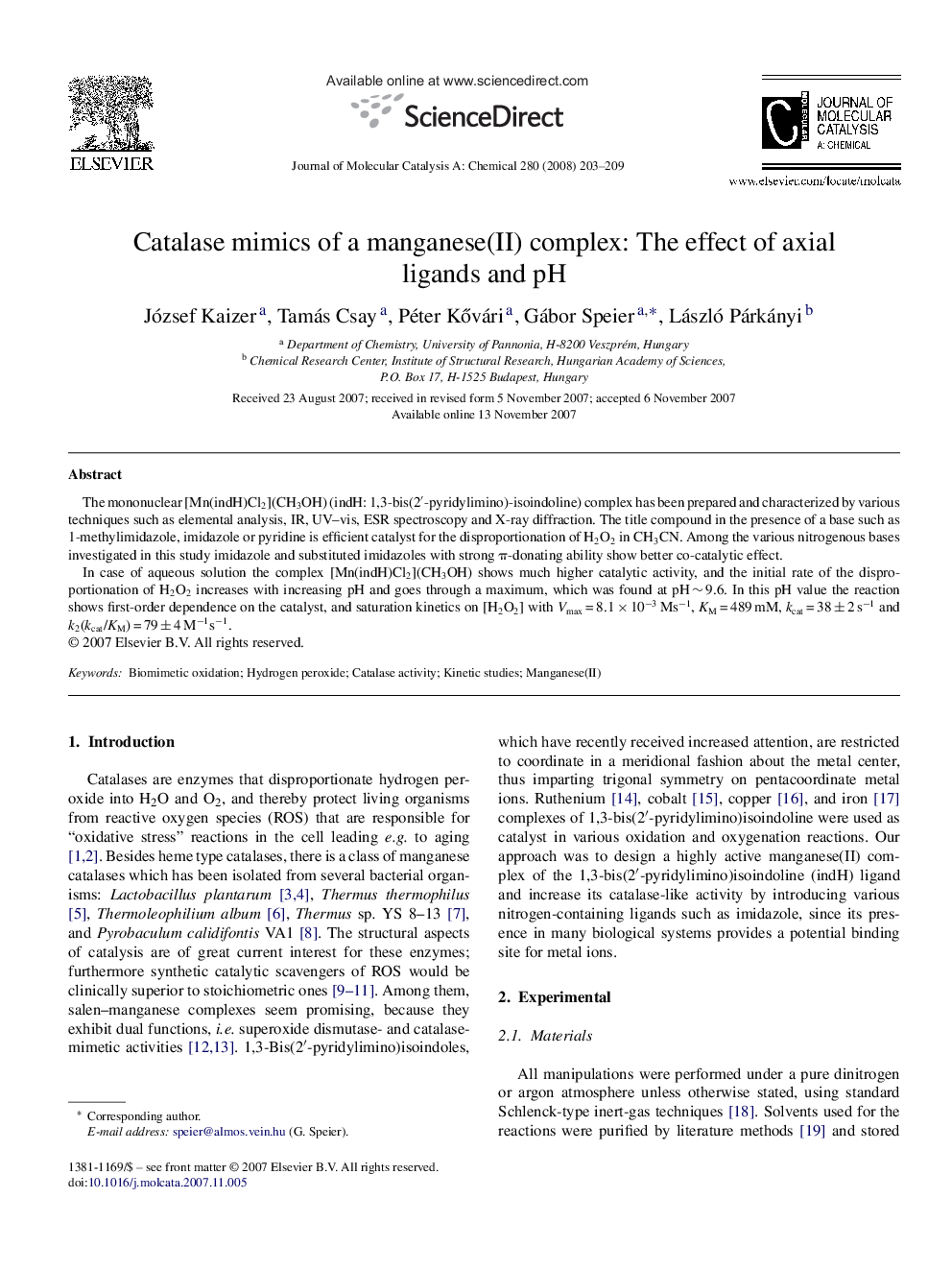| Article ID | Journal | Published Year | Pages | File Type |
|---|---|---|---|---|
| 68532 | Journal of Molecular Catalysis A: Chemical | 2008 | 7 Pages |
The mononuclear [Mn(indH)Cl2](CH3OH) (indH: 1,3-bis(2′-pyridylimino)-isoindoline) complex has been prepared and characterized by various techniques such as elemental analysis, IR, UV–vis, ESR spectroscopy and X-ray diffraction. The title compound in the presence of a base such as 1-methylimidazole, imidazole or pyridine is efficient catalyst for the disproportionation of H2O2 in CH3CN. Among the various nitrogenous bases investigated in this study imidazole and substituted imidazoles with strong π-donating ability show better co-catalytic effect.In case of aqueous solution the complex [Mn(indH)Cl2](CH3OH) shows much higher catalytic activity, and the initial rate of the disproportionation of H2O2 increases with increasing pH and goes through a maximum, which was found at pH ∼ 9.6. In this pH value the reaction shows first-order dependence on the catalyst, and saturation kinetics on [H2O2] with Vmax = 8.1 × 10−3 Ms−1, KM = 489 mM, kcat = 38 ± 2 s−1 and k2(kcat/KM) = 79 ± 4 M−1s−1.
Graphical abstractCatalase mimics of a manganese(II) complex: the effect of axial ligands and pH. The mononuclear [Mn(indH)Cl2](CH3OH) (indH: 1,3-bis(2′-pyridylimino)isoindoline) complex has been prepared and found to be suitable catalyst for the catalytic disproportionation of H2O2 into H2O and O2. Figure optionsDownload full-size imageDownload as PowerPoint slide
